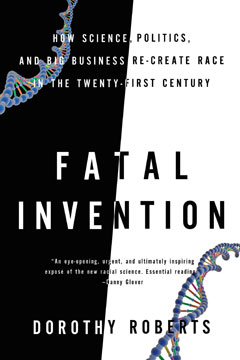Obama and the black wave: Deconstructing myths, building strategiesPosted in Articles, Barack Obama, Brazil, Caribbean/Latin America, Media Archive, Politics/Public Policy, United States on 2012-08-19 04:19Z by Steven |
Obama and the black wave: Deconstructing myths, building strategies
Pambazuka News: Pan-African Voices for Freedom and Justice
2009-02-19 (Issue 420)
Raquel Luciana de Souza
Having closely followed Barack Obama’s electoral success, Raquel Luciana de Souza considers the prospects for a presidential candidate of African descent within the South American giant of Brazil. Scrutinising the historical myth of Brazil’s racial democracy and the supposed absence of formal barriers to Afro-Brazilian social mobility in contrast to the US, de Souza considers the role of the US’s implementation of measures to address socio-racial disparities and the successful struggles of black organisations in framing the broader background behind Obama’s rise.
At last the calendar signals the much anticipated 4 November 2008, the day the long marathon of the latest American electoral process would be concluded. It is impossible to ignore the irony that after spending nine years of my life studying in the United States, I found myself in front of the television in Recife, Pernambuco, Brazil, homeland of Gilberto Freyre. Freyre, of course, was the very author whose racist, sexist, and fairly imaginative visions about race relations in Brazil influenced generations of national and international researchers, politicians, intellectuals, as well as common sense notions about class, race, and racism in Brazil. As the counting of the votes officially begins, a friend cautions me about the possibility of a McCain victory, which triggers an unutterable anguish in the very core of my being. However, that feeling was quickly replaced by the absolute thrill of witnessing the reconfiguration of the American electoral map. At the first hour of 5 November, it was confirmed that the US had elected its first black president. Barack Obama’s triumph was the culmination of a highly competitive political contest; the media and global frenzy surrounding the Democratic candidate’s campaign became gradually more palpable as he gained strength in opinion and voter intention polls. That day I realised that I had spent months holding my breath, immersed in an intense electoral process that was marked by unprecedented circumstances. For the first time, a black man and a woman vied to be nominated for presidential candidate of the Democratic Party…
…Therefore, while I euphorically contemplated the conclusion of an electoral process that culminated with the election of a black president for the position of commander-in-chief of the US, questions and speculations about the ramifications of such an important political development for Brazil and the African Diaspora consumed me. The triumph of a high-ranking politician, the son of a continental African from Kenya and a white American woman from Kansas, was consolidated before the whole world. Before me was a black president married to a black woman, both products of the highest quality of formal education acquired at Harvard, a prestigious university, and eloquent lawyers who demonstrated in their discourse and intervention an almost unwavering self-confidence and mastery of words that slowly but surely conquered even the favouritism of the media. As a researcher of racial issues through a comparative perspective, I realised then that such a political moment urged for perspectives and approaches that went beyond pre-established parameters. Aiming to discuss the possible ramifications of such political scenery and its broader implications more adequately, I constantly transferred my thoughts to the Brazilian context…
…Conversely, we should now consider the real scenery in which Barack Obama became the first black president of the US. In Brazil, the celebration of such a historical event has been featured prominently on the front page of all the mainstream newspapers and magazines. A sort of cynical satisfaction has also been displayed on the faces of TV anchors, political commentators, and reporters as they announced and discussed the fact that Americans had elected their first black president. Images from the US of whites, blacks, and others who celebrated Obama’s victory in euphoric tears were exhibited, demonstrating that the country had finally transcended the racism that had infested its social, legal, political, and educational relations for so many centuries. Yet, for the most accurate eyes and ears, what was implicit in accounts of celebration disseminated through Brazilian mass media was the notion that such cathartic and healing experiences were not needed in Brazil. In fact, what was almost cynically celebrated was the fallacy that finally the USA had overcome their racial injuries, while our racial problems had been resolved many decades ago, if they ever existed. After all, according to traditional hegemonic narratives that romanticise race relations in Brazil, Brazilians never had to deal with formal racial segregation that established barriers to the socio-economic ascension of Africans and their descendants, and therefore there would be no wounds to be healed and no damage to be repaired…
Read the entire article here.
